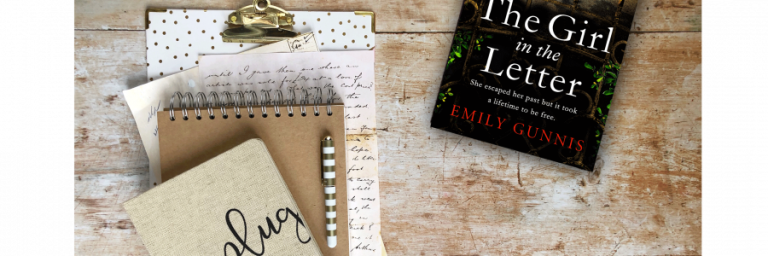The heartbreaking true stories behind The Girl in the Letter

1956. When Ivy Jenkins falls pregnant she is sent in disgrace to St Margaret’s, a dark, brooding house for unmarried mothers. Her baby is adopted against her will. Ivy will never leave.
Present day. Samantha Harper is a journalist desperate for a break. When she stumbles on a letter from the past, the contents shock and move her. The letter is from a young mother, begging to be rescued from St Margaret’s. Before it is too late.
Sam is pulled into the tragic story and discovers a spate of unexplained deaths surrounding the woman and her child. With St Margaret’s set for demolition, Sam has only hours to piece together a sixty-year-old mystery before the truth, which lies disturbingly close to home, is lost for ever…
Read her letter. Remember her story…
Though not based on one particular story, The Girl in the Letter takes inspiration from true events that occurred in numerous Mother and Baby homes across the UK in the 1950s and 60s. The below extract was written by Rose Bell, and was taken from www.motherandbabyhomes.com. On her website, Rose details the tragic truth of Mother and Baby homes in the UK. She has given Bookends the below extract. To read more, please visit her site.
Discovering Pregnancy
” The women of this study were raised in an era when unmarried motherhood was truly reviled, had parents who refused to discuss such intimate matters as sex and pregnancy, had no access to abortion (though whether they would have chosen this option I could not say), and were forced without having too much choice in the matter to hide their pregnancies, carry and bear a child they were then made to give up for adoption.
“Many young women prayed it would go away if they just ignored it.”
That is the climate to understand when reading about the moment they discovered they were pregnant. There were no home pregnancy tests in the 1960s; these did not appear until 1978. A few experienced horrendous morning sickness, which they had to go to great lengths to hide as they shared bedrooms and bathrooms with family, waking extra early to be sick before the rest of the family woke. Or being sick in their bedrooms and having to hide it so no one would find out. For the majority it was the absence of their period that clued them in to the pregnancy. Some understood what this meant almost immediately, while others existed in a detached state of denial which kept them from truly believing the meaning of that absence. The women’s mothers were commonly the ones who purchased the sanitary napkins each month, and when the girls failed to show the mothers became aware of what was happening. Many young women prayed it would go away if they just ignored it.
Eventually they each were made to face the difficult reality of their situation, this often occurred in the doctor’s office. Either on their own or with their mothers the women were taken to the family doctor who confirmed their pregnancy. The news, even if they had already known it, was devastating. One recalled falling into a surreal state, like being underwater. The world moving past her while she was trapped in a dream. The doctors generally didn’t want to know anything, perhaps living in a small community they wished to avoid being involved in anyway. One said to the young woman, ‘Don’t tell me anything. I don’t want to know. I’ll give you the name of a social worker and she’ll sort you out.’ Another told the terrified mother-to-be, ‘Have some gin and a hot bath. Try falling down the stairs a few times.’ While a third said, ‘All I can do is give you a douche can and hope that works.’ The women did not explicitly ask for abortifacients, but their shock and the cultural understanding that unmarried pregnancy was unthinkable prompted their doctors to provide such advice.
The women were devastated with the discovery. For there were many young men and women having sex before marriage, but it was only the unlucky that found themselves pregnant. Their pregnancy marked them for their supposed moral transgressions, and set them on a path of heartache and loss. A moment, which for married women was one of joy and celebration, became instead a time of shame and guilt. They understood intrinsically the social climate in which they lived, they knew the mark this transgression placed upon them, and they feared what was to come. For some this weight of shame and guilt was too much and they attempted to induce a miscarriage, or at the more extreme end even attempted suicide. Fear of their parents finding out was tantamount to their desperate measures, and underscores the social conditions these women existed in.”
To read more about mother and baby homes in the UK, visit www.motherandbabyhomes.com.







